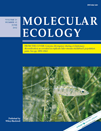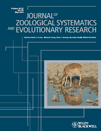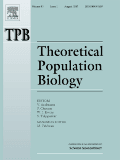
Evolutionary Biology
Scope & Guideline
Exploring the Depths of Biological Change
Introduction
Aims and Scopes
- Evolutionary Mechanisms and Dynamics:
The journal emphasizes the study of evolutionary mechanisms, including natural selection, genetic drift, and gene flow, exploring how these factors shape biodiversity and species interactions. - Morphological and Functional Evolution:
There is a strong focus on morphological traits and their evolutionary significance, often utilizing geometric morphometrics to analyze shape and size variations among species. - Population Genetics and Speciation:
Research often investigates genetic diversity within and between populations, contributing to the understanding of speciation processes and the maintenance of species boundaries. - Ecological and Environmental Influences on Evolution:
The journal explores how ecological factors and environmental changes influence evolutionary trajectories, including adaptations to urban environments and climate change. - Phylogenetic and Comparative Analyses:
The use of phylogenetic frameworks to examine evolutionary relationships and comparative methods to assess trait evolution across taxa is a notable aspect of the journal's scope.
Trending and Emerging
- Urban Evolution and Adaptation:
There is an increasing focus on how urban environments influence evolutionary processes, including phenotypic changes and adaptations in wildlife, as urbanization becomes a critical area of study. - Genomic and Molecular Approaches:
Recent research trends indicate a rise in the application of genomic techniques and molecular biology to understand evolutionary dynamics, highlighting the importance of genetic data in evolutionary studies. - Climate Change and Evolutionary Responses:
The impact of climate change on evolutionary processes is gaining traction, with studies exploring how species adapt to changing environments, emphasizing the relevance of evolutionary biology in conservation. - Integration of Evolutionary and Ecological Perspectives:
A notable trend is the integration of evolutionary biology with ecological dynamics, leading to a better understanding of how evolutionary processes interact with ecological factors in shaping biodiversity. - Interdisciplinary Approaches:
The journal is seeing an increase in interdisciplinary research that combines evolutionary biology with fields such as behavioral ecology, conservation biology, and environmental science, reflecting a holistic view of evolutionary challenges.
Declining or Waning
- Historical and Paleontological Studies:
There appears to be a waning interest in historical and paleontological perspectives in evolutionary biology, as more recent publications have shifted towards contemporary ecological and genetic studies. - Traditional Morphometric Methods:
Although geometric morphometrics remains prominent, traditional morphometric approaches seem to be receiving less attention, possibly due to the rise of more advanced analytical techniques. - Broad Taxonomic Studies:
Research that covers a broad range of taxa without a specific focus has decreased, with a growing trend towards detailed studies of specific species or groups, particularly in response to ecological pressures.
Similar Journals

MOLECULAR ECOLOGY
Decoding Biodiversity Through Molecular InsightsMOLECULAR ECOLOGY is a premier journal published by WILEY, dedicated to the dissemination of cutting-edge research in the fields of ecology, evolution, and genetics. Established in 1992, the journal has rapidly ascended to prominence, currently holding a Q1 ranking in both Ecology, Evolution, Behavior and Systematics as well as Genetics for 2023. With an impressive Scopus ranking of #54 in the Ecology and Evolution category and #65 in Genetics, it is clear that MOLECULAR ECOLOGY is recognized for its contributions to the scientific community, boasting a high percentile ranking of 92nd and 81st, respectively. While the journal does not currently offer open access options, it remains an indispensable resource for researchers, professionals, and students seeking to explore the molecular underpinnings of ecological and evolutionary processes. Published regularly until 2024, this journal serves as a vital platform for advancing our understanding of biodiversity, species interactions, and genetic variability. With its rigorous peer-review process and commitment to excellence, MOLECULAR ECOLOGY continues to shape the landscape of molecular biological research.

JOURNAL OF ZOOLOGICAL SYSTEMATICS AND EVOLUTIONARY RESEARCH
Unraveling Biodiversity Through Systematic ResearchThe Journal of Zoological Systematics and Evolutionary Research, published by Wiley-Hindawi, stands as a premier academic journal since its establishment, showcasing cutting-edge research in the fields of Animal Science, Zoology, and Ecology. With an impressive track record spanning from 1963 to the present, this journal has earned a Q1 classification in both Animal Science and Ecology, as well as recognized rankings in Genetics and Molecular Biology. Its impact is highlighted by its Scopus ranks, placing it in the top percentile for relevant categories, underscoring its vital role in advancing knowledge and understanding within these disciplines. Researchers, professionals, and students will find a wealth of high-quality, peer-reviewed articles that contribute to the evolutionary understanding of biodiversity and systematics. Though not an Open Access journal, it remains accessible to a wide audience committed to exploring the intricacies of zoology and evolutionary biology.

INSECT SYSTEMATICS & EVOLUTION
Advancing the Frontiers of Insect ScienceINSECT SYSTEMATICS & EVOLUTION is a prestigious journal published by BRILL, which has been a vital source of scholarly information since its inception. Specializing in the fields of ecology, evolution, behavior, and systematics within the realm of insect science, this journal garners significant attention with its 2023 ranking in the second quartile across multiple categories, highlighting its relevance and impact in the field. With a focus on advancing knowledge through innovative research and reviews, it serves as an essential platform for researchers, professionals, and students alike, promoting an understanding of insect biodiversity and systematics. The journal’s accessibility options, including its Open Access policy, combined with a broad international scope, ensure that critical findings reach a diverse audience, fostering collaboration and discourse within the scientific community. Situated in the Netherlands, INSECT SYSTEMATICS & EVOLUTION maintains its commitment to excellence and strives to contribute actively to the ongoing dialogue in insect science, making it a must-read for anyone interested in the intricate world of insects.

THEORETICAL POPULATION BIOLOGY
Innovating Insights in Evolutionary FrameworksTHEORETICAL POPULATION BIOLOGY is a leading academic journal published by Academic Press Inc. Elsevier Science, dedicated to advancing the understanding of population biology through theoretical frameworks and models. With an ISSN of 0040-5809 and an E-ISSN of 1096-0325, this journal has been a cornerstone in its field since its inception in 1970. Recognized for its significant contributions to the study of ecological and evolutionary dynamics, it currently holds a Q2 ranking in the Ecology, Evolution, Behavior and Systematics category as per the 2023 category quartiles. Researchers and professionals alike appreciate its role in disseminating impactful findings, as reflected in its percentile ranking of the 51st in Scopus for the Agricultural and Biological Sciences field. While the journal is not open access, it remains a vital resource for those looking to deepen their knowledge and research in theoretical approaches to population biology, making it an essential read for students, aspiring scientists, and veteran researchers seeking to engage with cutting-edge theoretical developments.

Insect Systematics and Diversity
Fostering Collaboration in the World of Insect ScienceInsect Systematics and Diversity, published by Oxford University Press Inc., stands as a leading journal in the realm of entomological research, boasting an impressive impact factor driven by its rigorous peer-review process and high-quality publications. With a focus on animal science, zoology, developmental biology, and insect science, the journal is expertly positioned to address the complexities of insect evolution, behavior, and ecological interactions. Since its inception in 2017, the journal has rapidly gained recognition, achieving Q1 quartile ranks in multiple categories, including Insect Science and Ecology, Evolution, Behavior, and Systematics, indicating its relevance and prestige within the academic community. Researchers, professionals, and students alike will find invaluable insights, methodologies, and discussions that propel the understanding of insect diversity and systematics, ensuring the journal is an essential resource for advancing knowledge in this dynamic field. The journal provides access to a wealth of information, fostering collaboration and engagement within the global scientific community.

Nature Ecology & Evolution
Driving innovation in the study of behavior and systematics.Nature Ecology & Evolution is a premier journal that serves as a cornerstone for cutting-edge research in the dynamic fields of ecology, evolution, behavior, and systematics. Published by NATURE PORTFOLIO, this journal, with the ISSN 2397-334X, emphasizes high-quality, impactful studies that advance our understanding of ecological interactions and evolutionary processes. With an impressive Scopus ranking placing it in the 99th percentile—#6 out of 721 in Ecology, Evolution, Behavior and Systematics and #5 out of 461 in Environmental Science Ecology—it is classified as a Q1 journal, highlighting its significance in the research community. Established in 2016, it continues to foster an open dialogue among researchers and practitioners while facilitating the dissemination of transformative ideas that shape environmental policy and conservation strategies. While access to articles is restricted, the journal's robust impact factor underscores its relevance in scholarly discourse. Researchers, professionals, and students are encouraged to engage with the current trends and discoveries published in this leading journal, which thrives on addressing the challenges and complexities of our natural world.

Genome Biology and Evolution
Advancing Knowledge in Genomic ProcessesGenome Biology and Evolution, published by Oxford University Press, is a leading open-access journal that has been instrumental in advancing research in the fields of genetics and evolutionary biology since its inception in 2009. With an impressive Q1 ranking in both Ecology, Evolution, Behavior and Systematics and Genetics in 2023, the journal is recognized for its high-quality publications that contribute significantly to the understanding of genomic processes across diverse organisms. As part of its commitment to disseminating impactful research, it is dedicated to fostering interdisciplinary collaboration among scientists and providing a platform for innovative findings. Researchers, professionals, and students alike are encouraged to explore the wealth of knowledge within its pages, contributing to ongoing discussions that shape our understanding of evolutionary mechanisms and genomic data interpretation. With its robust access options and a strong commitment to wide dissemination of research, Genome Biology and Evolution remains an essential resource for anyone engaged in the life sciences.

ZHURNAL OBSHCHEI BIOLOGII
Exploring the Depths of Biological KnowledgeZHURNAL OBSHCHEI BIOLOGII, published by MEZHDUNARODNAYA KNIGA in the Russian Federation, is a venerable journal with a rich history originating in 1945. Renowned for its contributions to the fields of Ecology, Evolution, Behavior, and Systematics, as well as Medicine (miscellaneous), this journal provides a platform for researchers and professionals to disseminate significant findings within these domains. Although currently not classified as an open access publication, ZHURNAL OBSHCHEI BIOLOGII holds a Q4 quartile designation in its respective categories, reflecting its unique positioning within the global research landscape. While its coverage in Scopus is limited, the journal remains an important resource for academics interested in the evolution of biological sciences, especially within the context of Russian research traditions. By fostering scholarly communication and collaboration, ZHURNAL OBSHCHEI BIOLOGII continues to play a critical role in advancing knowledge in the biological sciences.

EVOLUTIONARY ECOLOGY
Unraveling the Dynamics of Ecosystems and EvolutionEVOLUTIONARY ECOLOGY is a prestigious academic journal published by SPRINGER, exploring the intricate relationships between evolutionary processes and ecological dynamics since its inception in 1987. As a key resource in the field of Ecology, Evolution, Behavior, and Systematics, the journal is recognized for its impactful contributions, holding a commendable Q2 quartile ranking in its category as of 2023. With an emphasis on empirical and theoretical studies that bridge evolutionary biology with ecological principles, EVOLUTIONARY ECOLOGY is essential for researchers, practitioners, and students aiming to deepen their understanding of biodiversity, adaptation, and ecosystem functioning. Although it currently does not offer open access, the journal maintains a commitment to disseminating high-quality research that influences both foundational knowledge and practical applications in the field. Located in the Netherlands, the journal continues to serve a global audience, making significant contributions to advancing ecological and evolutionary research through rigorous scientific discourse and innovation.

JOURNAL OF EVOLUTIONARY BIOLOGY
Pioneering Research in Evolutionary BiologyJOURNAL OF EVOLUTIONARY BIOLOGY, published by Wiley, is a prestigious, peer-reviewed journal that has served as a key platform for groundbreaking research in the field of evolutionary biology since its inception in 1988. With its remarkable Q1 status in the 2023 category of Ecology, Evolution, Behavior, and Systematics, the journal is recognized for its high-quality contributions and impactful findings, currently ranking 203 out of 721 in its category on Scopus, placing it in the 71st percentile. The journal covers a wide scope of topics, fostering discussions that advance our understanding of evolutionary processes and their applications, which is critical for researchers, academics, and students alike. While it does not offer Open Access options, subscribers can benefit from articles that explore diverse aspects of evolution and biodiversity. As the journal continues to evolve, it remains an essential resource for those keen on exploring the mechanisms of life’s diversity and adaptation.